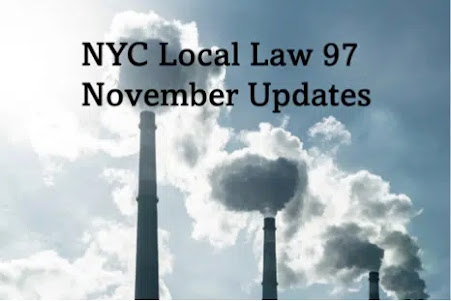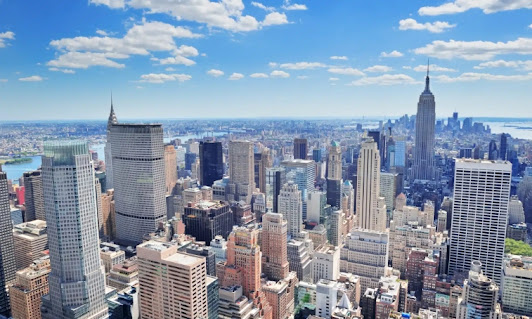Local Law 97 Update
As most NYC apartment owners and managers know, the City of New York enacted Local Law 97 (LL97) in 2019 as a part of the Climate Mobilization Act. This forward looking law places carbon caps on most buildings larger than 25,000 square feet—roughly 50,000 residential and commercial properties across NYC. These caps start in 2024 and will become more stringent over time, eventually reducing carbon emissions 80 percent by 2050.
Heat-Timer® has been actively involved in the discussion around LL97 and
has provided assistance to hundreds of NYC building owners as they plan for
compliance to the law and seek to avoid increasing penalties for
non-compliance.
Recent Local Law 97 Updates
The rules around NYC local law 97 are complex and reflect a timetable
that allows building owners time to get their properties analyzed and solutions
proposed and budgeted. On October 6, 2022, the NYC Department of Buildings
released a new document called Proposed
Rules for Local Law 97 that answers and clarifies more questions
about the law’s requirements through 2050.
Here are a few key take-away’s from the update, which building owners
need to know.
1. 60 NEW PROPERTY TYPES ADDED FROM EPA’S PORTFOLIO
MANAGER
The EPA’s Portfolio Manager, is the well-established tool for tracking building energy use. LL97 originally set 10 emissions limits based on Building Code occupancy group classifications. The proposed rules expand those categories based on Portfolio Manager, which includes dozens of different property types that more accurately reflect the variation in energy use among buildings.
2. BUILDING EMISSIONS LIMITS SET FOR ALL PROPERTY TYPES TO 2050 AND BEYOND
The proposed rules assign new emissions limits for each new property
type from 2030 through 2049. From 2050 onward, a zero emissions requirement
applies to all property types—a move that aligns to global 1.5°C climate
targets. For 2024 to 2029, the proposed rules preserve LL97’s original 10
emissions limits but distribute those limits across the 60 Portfolio Manager
property types, creating better-tailored targets for all buildings.
3. A 2030 ELECTRICITY CARBON COEFFICIENT THAT REFLECTS
THE GREENING GRID AND SUPPORTS ELECTRIFICATION
The electricity carbon coefficient is used to calculate the carbon
content of the electricity that a building consumes each year. The proposed
rules specify an electricity coefficient for 2030 to 2034 that is about 50
percent lower than the one that applies for 2024 to 2029. This change reflects
major new clean energy coming to NYC in the next few years, bringing rapid
decarbonization to reach New
York State CLCPA targets.
4. RECS CAN ONLY OFFSET EMISSIONS FROM ELECTRICITY USE
LL97 allows building owners to deduct or offset annual building
emissions through the purchase of renewable energy credits (RECs) for local
green power. The proposed rules clarify that these deductions are limited to
emissions from building electricity use, which would ensure that credits for
the purchase of green electricity aren’t used to offset fossil fuels burned
onsite for heat and hot water.
Heat-Timer® Can Help with LL97 Compliance
By reducing the energy consumption of your heating systems by up to 30%,
Heat-Timer® Platinum
Series Boiler Controls and our newly released Genesis Heat-Timer
control can go a long way to reducing your carbon footprint and meeting the
increasingly stringent requirements of LL97. Best of all for New York
customers, there are rebate programs which most utility companies are providing
that can offset a major part of the cost of heating control installation. A
current list of rebate incentives available to New York Customers is available
at the NYSERDA
website.
For more information on the hundreds of customers Heat-Timer® has helped
comply with LL 97, give us a call today.
This blog was originally published at https://www.heat-timer.com/local-law-97-update/





Comments
Post a Comment